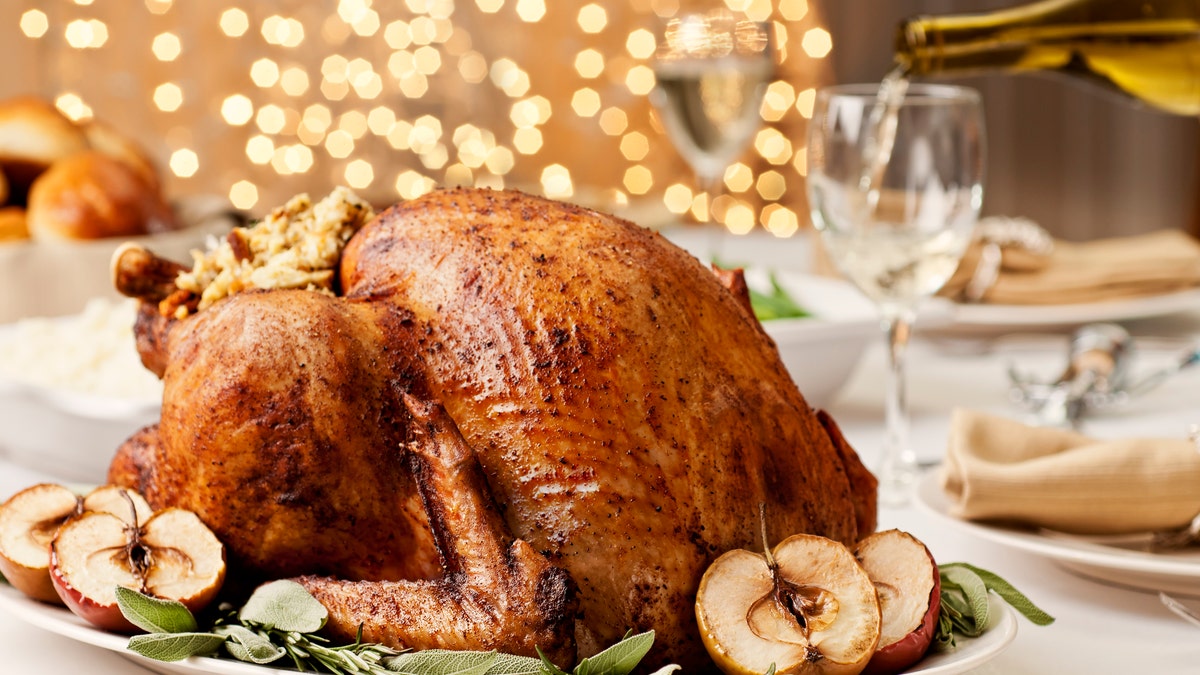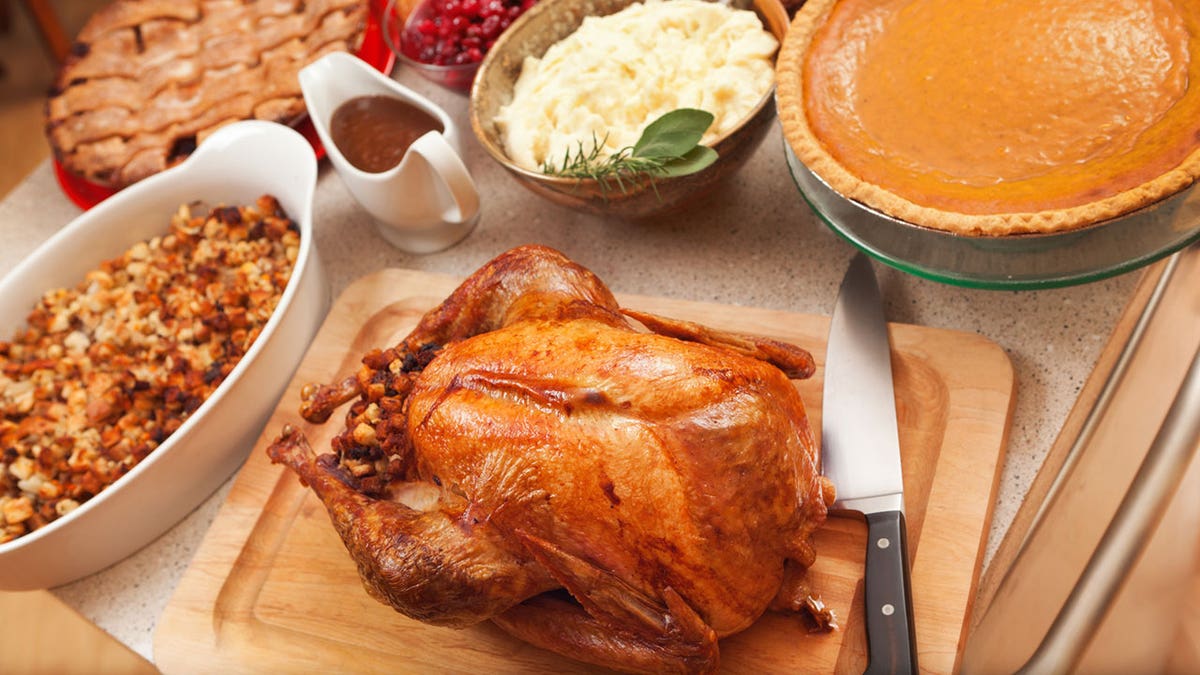When cooking a turkey this Thanksgiving, it is helpful to follow the science, according to a recent NPR report.
First, study the turkey’s anatomy from its leg to its breast, explained Kenji López-Alt, a New York Times food columnist and author of "The Food Lab."

Thanksgiving turkey with side items.
The author noted because the white breast meat needs to be cooked at 150 degrees Fahrenheit, but the dark leg and thigh meat should reach least 165 degrees (ideally 175 degrees), by the time the legs are the correct temperature, the breast is overcooked.
THANKSGIVING TURKEY: HOW TO SAFELY PREPARE IT
Understanding how the turkeys use their different muscle groups helps bakers to not overcook them: The white breast meat is made up of fast-twitch muscles, which are activated only in short bursts of exertion.
"Those types of muscles are generally low in connective tissue, low in fat and very strong. And what that means is that it's relatively easy to overcook them," López-Alt said.
The dark leg and thigh meat, however, consists of slow-twitch muscle fibers, which the turkey uses more frequently, so the dark meat has a lot more connective tissue, which requires higher temperatures to be fully cooked.

Elegant Thanksgiving Dinner (iStock)
The author also sympathized with bakers because of the geometric complexities of the turkey in the context of the finite limitations of the roasting pan.
"It would be difficult to design a worse tool for roasting a turkey than a roasting pan because you're taking a problem that already exists and making it even worse," López-Alt noted.
The turkey cooks unevenly because the typical roasting pan covers the bottom of the turkey (aka the legs and thighs), thereby shielding it from the heat, while the breast is on top of the pan, exposing it more to the hot oven temperatures.

Traditional Thanksgiving dinner. (iStock)
A simple solution is swapping the roasting pan with a baking sheet with the turkey on either a V-shaped rack or on a heated pizza stone, because then the heat will radiate through the bottom of the sheet to help the legs and thighs cook faster.
Another more unconventional alternative is to chop the turkey before you bake it, either by using a technique called "spatchcocking," where the backbone is removed in order for the turkey to lay flat or by asking your friendly neighborhood butcher to do it for you, with the ultimate goal of the turkey cooking evenly.
SKILLET GREEN BEAN CASSEROLE FOR THANKSGIVING: TRY THE RECIPE
Even though the U.S. Department of Agriculture recommends cooking the turkey at 165 degrees, this will dry out the breast meat, so even though bacteria will be killed instantaneously at 165 degrees Fahrenheit, you can also destroy an equivalent amount simply by heating it slower at 150 degrees — as long as your turkey breast remains at that temperature for approximately four minutes, according to NPR.
Consider also adding salt, because this will loosen some of the proteins in the meat fibers that tighten during normal cooking, allowing the turkey to hold onto more moisture, so it stays juicier, per NPR.
CLICK HERE TO GET THE FOX NEWS APP
But at the end of the day, even if the turkey doesn’t come out perfect, it’s okay.
"As long as the turkey has got people around the table, then it's done its job no matter how dry it is," López-Alt promised.
Click here for helpful how-to hints from López-Alt.

